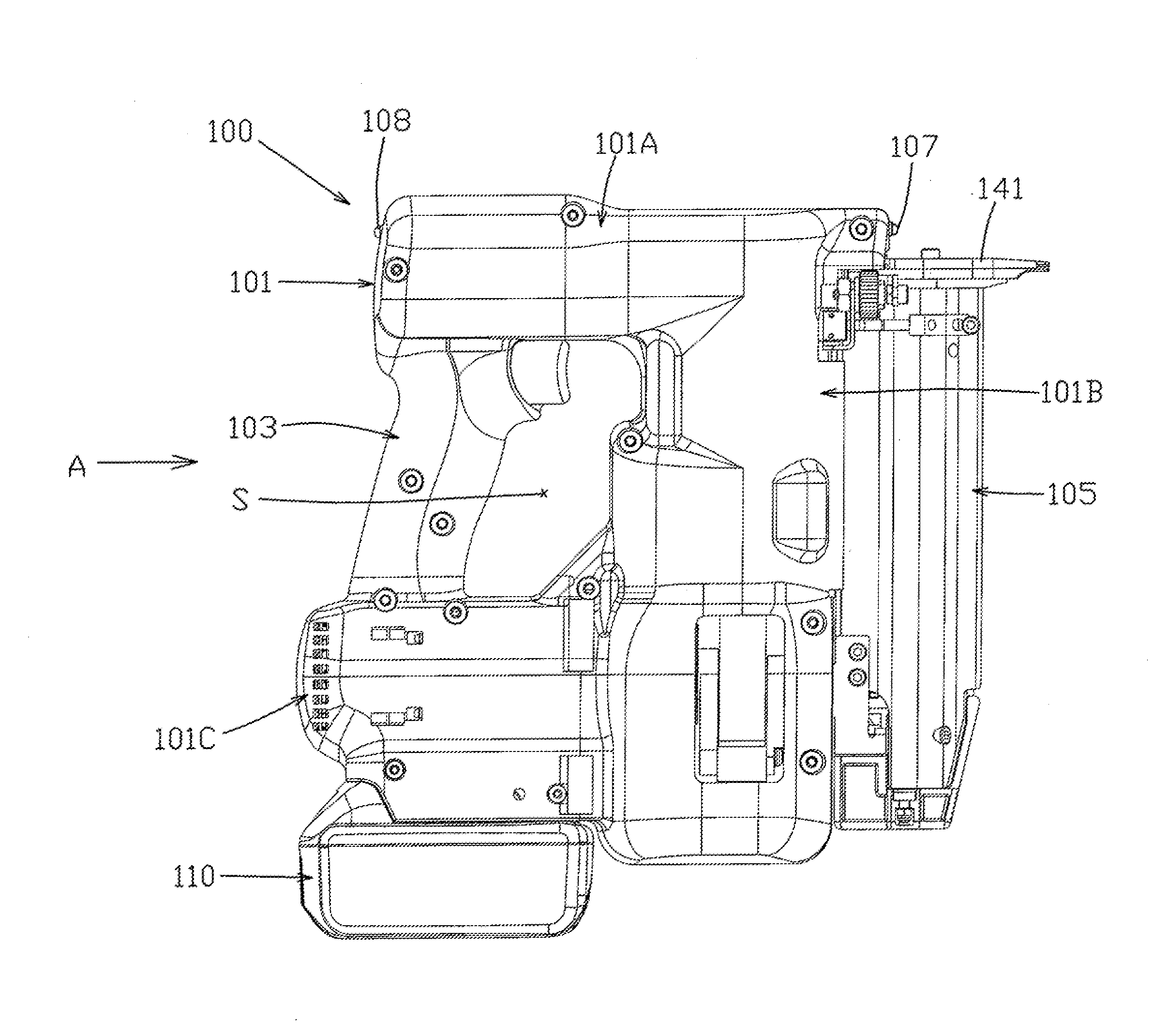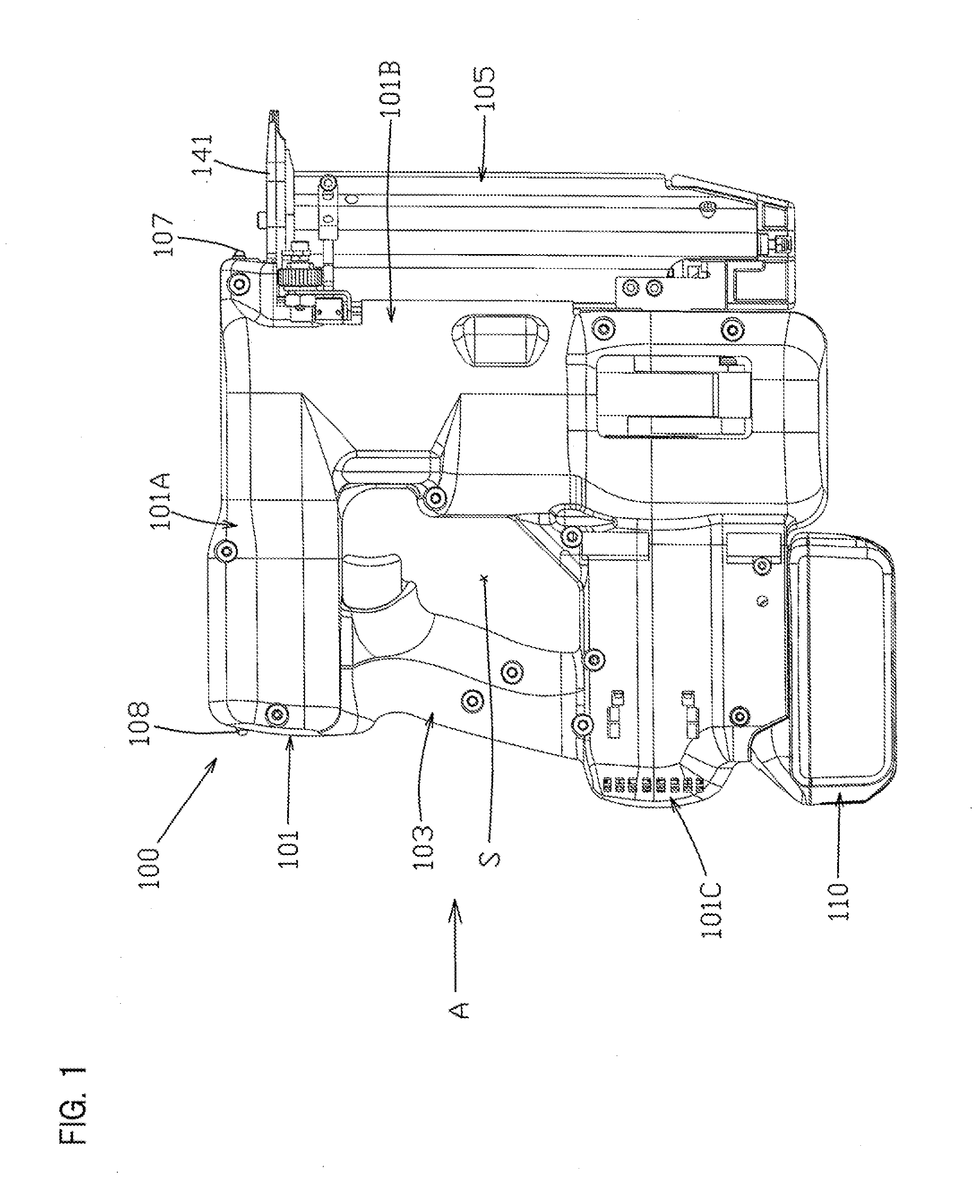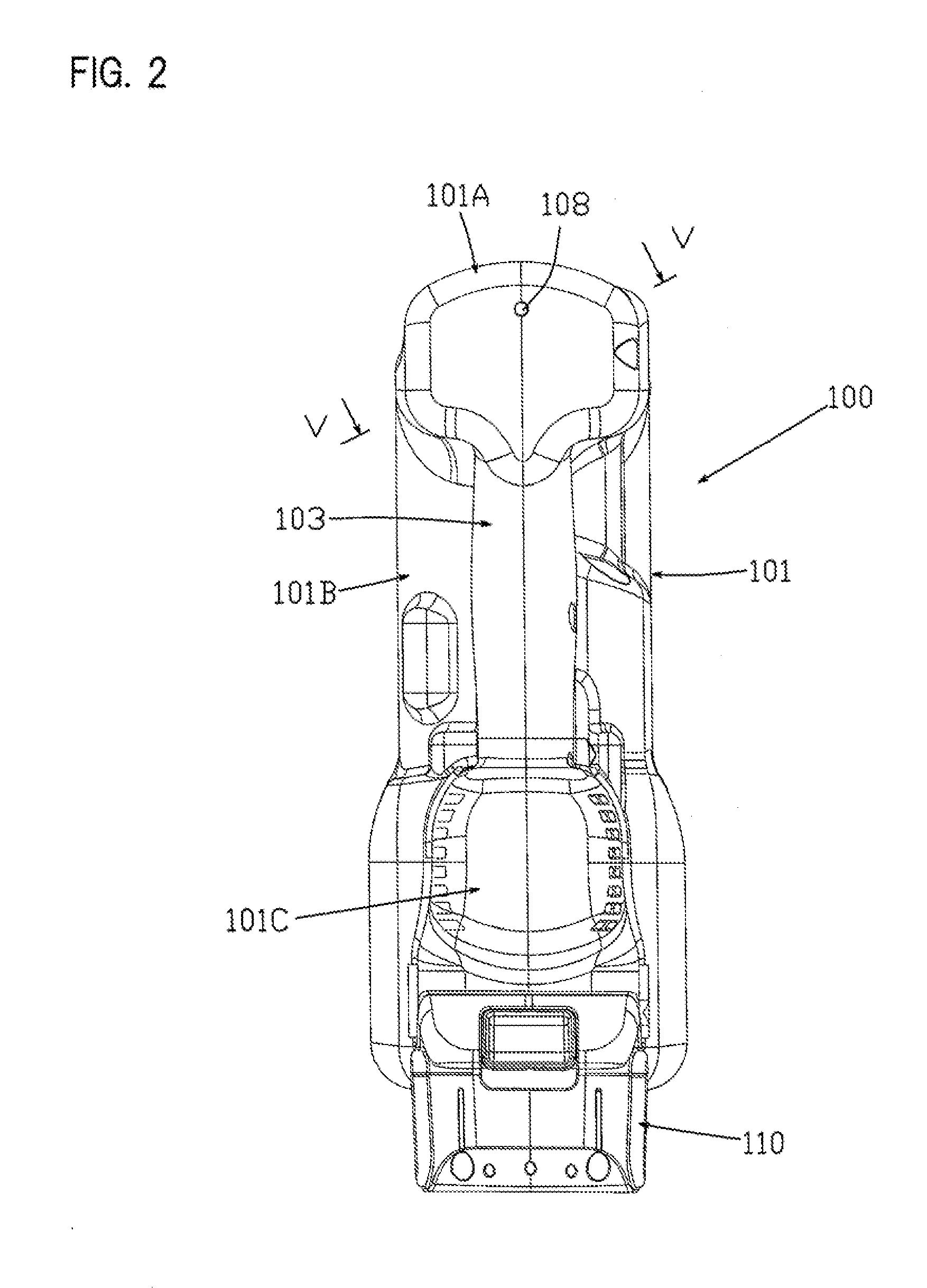Driving tool
a technology of driving tools and cylinders, applied in the field of driving tools, can solve problems such as insufficient or excessive air compression, and achieve the effect of smooth and reliable performan
- Summary
- Abstract
- Description
- Claims
- Application Information
AI Technical Summary
Benefits of technology
Problems solved by technology
Method used
Image
Examples
first embodiment
[0031]A first embodiment will be explained below, with reference to FIG. 1 through FIG. 9, as a representative embodiment of the present disclosure. The first embodiment is explained using an electro-pneumatic nailer as one non-limiting example of a driving tool according to the present disclosure. As shown in the overall views of FIG. 1 and FIG. 2, a nailer (nail gun) 100 may principally comprise a main-body housing 101 and a magazine 105. The main-body housing 101 is defined as a tool main body and forms an outer wall (shell) of the nailer 100. The magazine 105 is loaded with nails (not illustrated), which serve as driven articles that are to be driven into a workpiece. The main-body housing 101 is formed by joining a pair of substantially symmetrical housings together. The main-body housing 101 integrally comprises a handle (handle part) 103, a driving-mechanism housing part 101A, a compressing-apparatus housing part 101B, and a motor-housing part 101C.
[0032]The handle part 103, ...
second embodiment
[0081]In the above-described first embodiment, the control unit 109 is configured such that, in the first driving operation and in the second driving operation, it modifies the braking start timing, e.g., by changing a stored amount of time or by changing a stored crank angle when the braking of the compression piston 133 is initiated. However, in the second embodiment that will be described in the following, the braking force may be modified without modifying the braking start timing, in order to achieve a stopped position of the compression piston 133 after the second driving operation that is closer to its bottom dead center than after the first driving operation. It is noted that, except for the modification of the braking control, the configuration of the nailer 100 may be the same as that of the first embodiment; therefore the same reference numerals are assigned to the same structural elements as the first embodiment and an explanation of such structural elements may be omitt...
PUM
 Login to View More
Login to View More Abstract
Description
Claims
Application Information
 Login to View More
Login to View More - R&D
- Intellectual Property
- Life Sciences
- Materials
- Tech Scout
- Unparalleled Data Quality
- Higher Quality Content
- 60% Fewer Hallucinations
Browse by: Latest US Patents, China's latest patents, Technical Efficacy Thesaurus, Application Domain, Technology Topic, Popular Technical Reports.
© 2025 PatSnap. All rights reserved.Legal|Privacy policy|Modern Slavery Act Transparency Statement|Sitemap|About US| Contact US: help@patsnap.com



